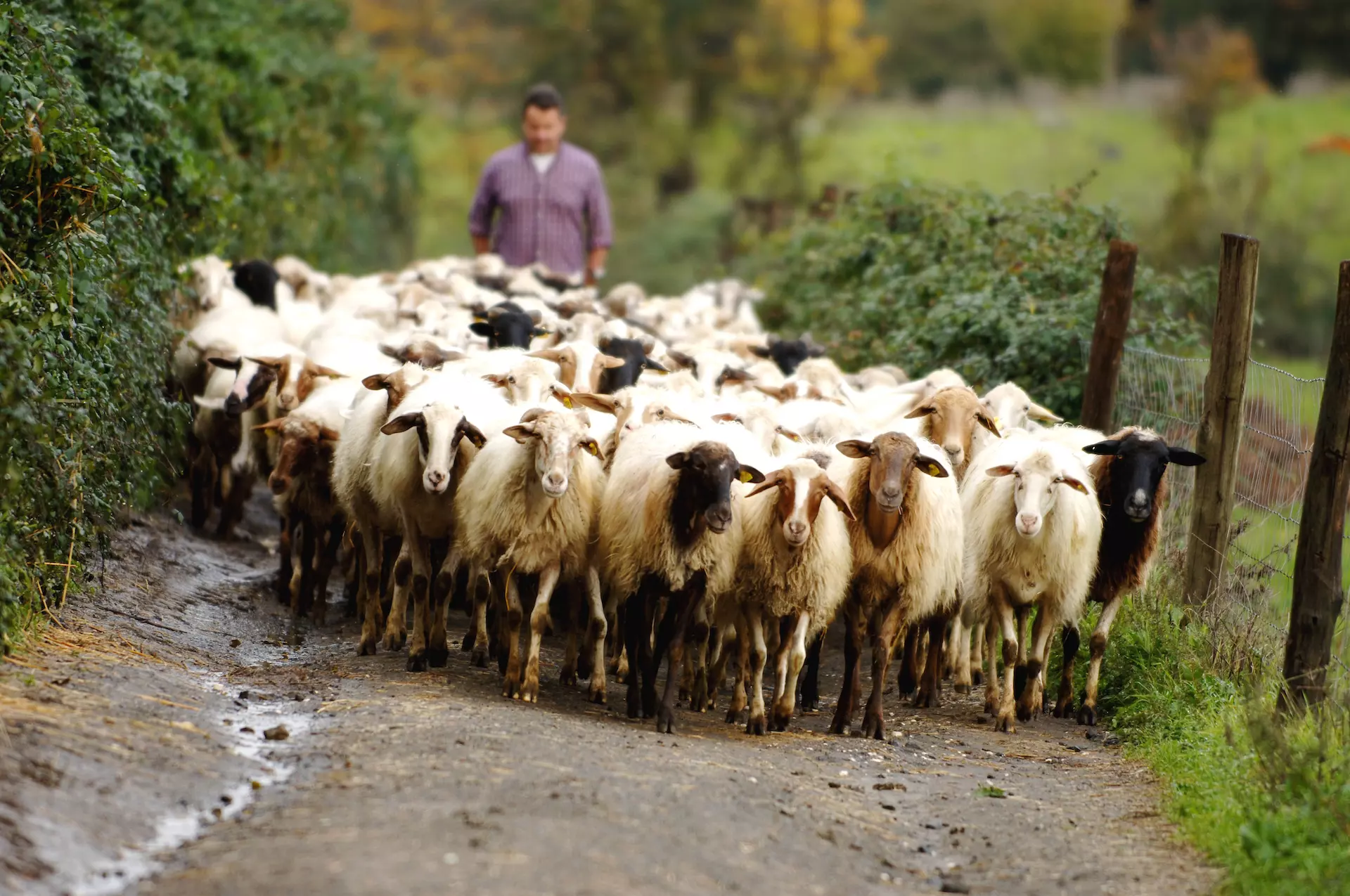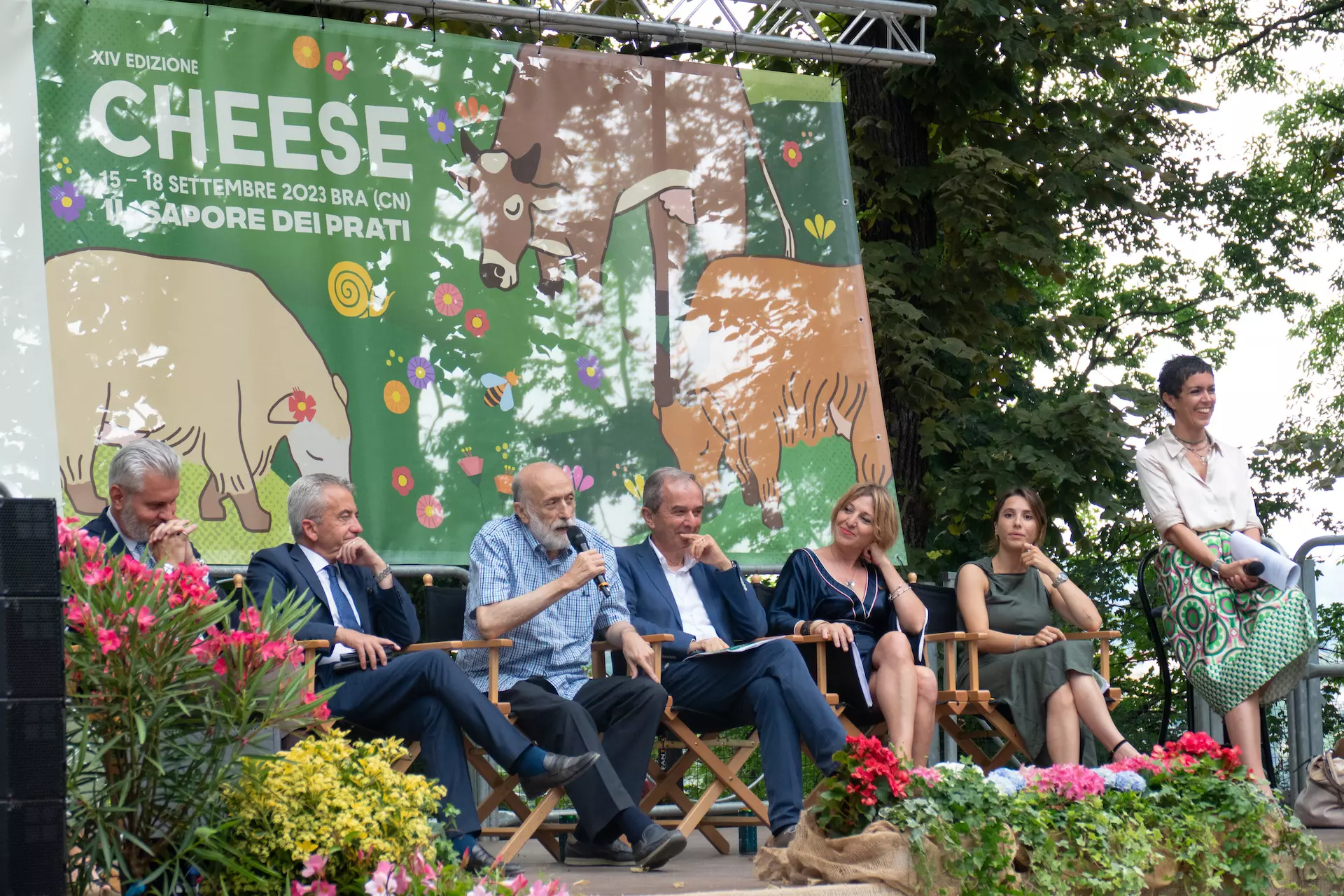https://www.lifegate.it/prati-allevamento-cheese-2023
- |
- Stable grasslands are important but very fragile ecosystems.
- Due to climate and human activities they are disappearing.
- The regenerative grazing technique, featured at Cheese 2023, can safeguard them.
We all had a picnic on a mountain meadow but without knowing that it was a “stable” lawn.What are stable meadows?It is a lawn that has not been plowed or tilled for a long time, even up to a hundred years.It is left to spontaneous cultivation, no weeding and no pesticides are used.The only agricultural practices to which it is subjected are mowing, irrigation and organic fertilization with manure.
They are lands of anthropic origin, that is, they were created centuries ago with deforestation and fires set by man to replace the woods with herbaceous surfaces and today's prairies are maintained only thanks to human activity, through mowing and grazing.
There are many stable meadows in Europe, perhaps more than we think, given what they represent 35 percent of agricultural fields, an area the size of France.The United Kingdom and Ireland are the countries that have the largest surface area but there is bad news:in the last 50-60 years the size of stable meadows has greatly reduced.

At Cheese, the dominant theme is the defense of stable meadows
What are the causes of this negative trend?“These meadows have been replaced by alternating grassland and they have become arable land;many farmers and shepherds have abandoned agriculture and the mountains;urbanization political choices were made by building car parks, shopping centers and roads on lawns", explains Giampiero Lombardi, professor of the Department of Agricultural, Forestry and Food Sciences at the University of Turin during Cheese, the event dedicated to the world of cheeses organized every two years by Slow Food in Bra, in the province of Cuneo."The climate change it also has an impact on the risk of the disappearance of stable meadows, because drought or in general the irregularity of rainfall hits them hard".All these threats affect at least 40 percent of Europe's stable grasslands.
Because they are important stable meadows?“Because they are places dedicated to grazing, so in addition to providing us with food, primarily dairy products, stable meadows also have a social function:there are farms that depend on these spaces,” adds Lombardi.And naturally stable meadows have a fundamental environmental function, because in addition to producing fodder for herbivores they promote the storage of CO2, useful for combating the climate crisis, and maintain plant, animal and microbiological biodiversity.Finally, they contribute to water purification.

The experience of regenerative grazing
Among Cheese's guests there is Mariana Weasel and his experience can change the fate of stable meadows.Donnola is an Argentine breeder who lives in Lazio, on the outskirts of Rome, where the buildings of the capital leave room for numerous open fields.Here, the farmer founded the agricultural company Argentina.
But it is thanks to the practice of regenerative farming that Mariana travels around Italy and the world to talk about her experience.The basic idea of this practice is that of let nature operate freely with the minimum possible human intervention.“The technique behind this system is the so-called rational pasture Voisin, theorized in France in the last century and then developed especially in South America" says Donnola.“The animals graze according to a very specific pattern, leaving time for the grass to rest and regenerate, and enter the meadow at times when the plant is in the growth phase”.
Why is it important to let the lawn rest?Mariana explains:“Once a meadow is grazed, it must be left fallow.As animals graze, the degrading roots release carbohydrates into the soil that are available for insects and soil organisms.It is a virtuous circle in which plants store solar energy and generate green matter."The regenerative farming system that drives the animals are several grazing parcels:they therefore alternate periods of rest with periods of high-density grazing.
Thus rational grazing it can be an answer to climate problems.As?“By increasing the activity of the soil microfauna, increasing the biodiversity of the pastures, more CO2 is stored than is emitted, soil erosion is reduced, the organic substance of the soil is increased and no use of herbicides or fertilizers chemicals, limiting mechanical interventions".There are not yet many studies on this type of technique.This is why sharing knowledge becomes essential.And Cheese responds precisely to this need.
